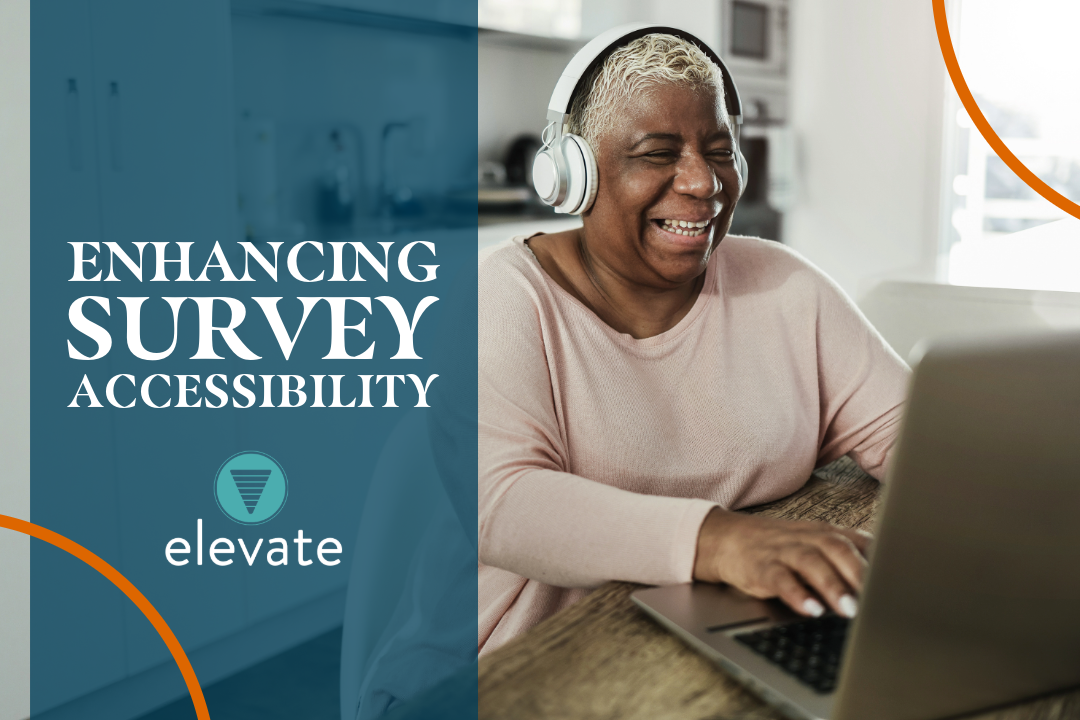Enhancing Survey Accessibility
Written by Jessica Gibbons-Benton
Over the last few months, Elevate has had the opportunity to work with the West End Home Foundation (WEHF) on an evaluation of their digital literacy and inclusion initiative for older Tennesseans. The evaluation of this initiative consists primarily of an online survey completed by older adults at the end of the various digital literacy programs WEHF funds. Several of WEHF’s funded partners serve older adults who are blind or have limited vision. This challenged us and our partners at WEHF to consider ways to make our online survey more accessible to these individuals. We haven’t arrived at a perfect solution yet, but here are some strategies we’ve learned about that can make online survey data collection more approachable for individuals who are blind:
Activate your online survey platform’s accessibility features. Survey platforms like SurveyMonkey have accessibility features built in to comply with Section 508, a federal law that requires all electronic and information technology used by the federal government to be accessible to people with disabilities. In SurveyMonkey, there are specific survey themes you can select that allow respondents to hear the survey via a screen reader.
Download a screen reader app. If you are collecting online survey data on an iPad or computer, there are a variety of screen reader apps available that translate screen content from text to speech for respondents. Some options include JAWS and NVDA for computers using Microsoft Windows and VoiceOver for iOS devices.
Voice record your survey. Record someone reading the survey and either play the recording back to respondents to collect data or post the recording somewhere online, like YouTube, and direct respondents to access it there. Where feasible, you may consider allowing respondents to listen to the recording ahead of time. This gives them an opportunity to listen to the survey prompts more than once and consider their responses, potentially enhancing data quality.
One consideration is that all of these options may still require another individual to help the respondent document their responses, either online or on paper. To minimize reporting bias, consider enlisting the help of a neutral individual who is not associated with the programming you are evaluating to provide this support.


